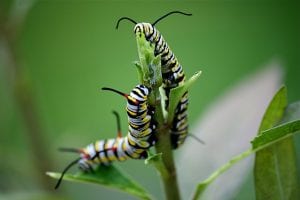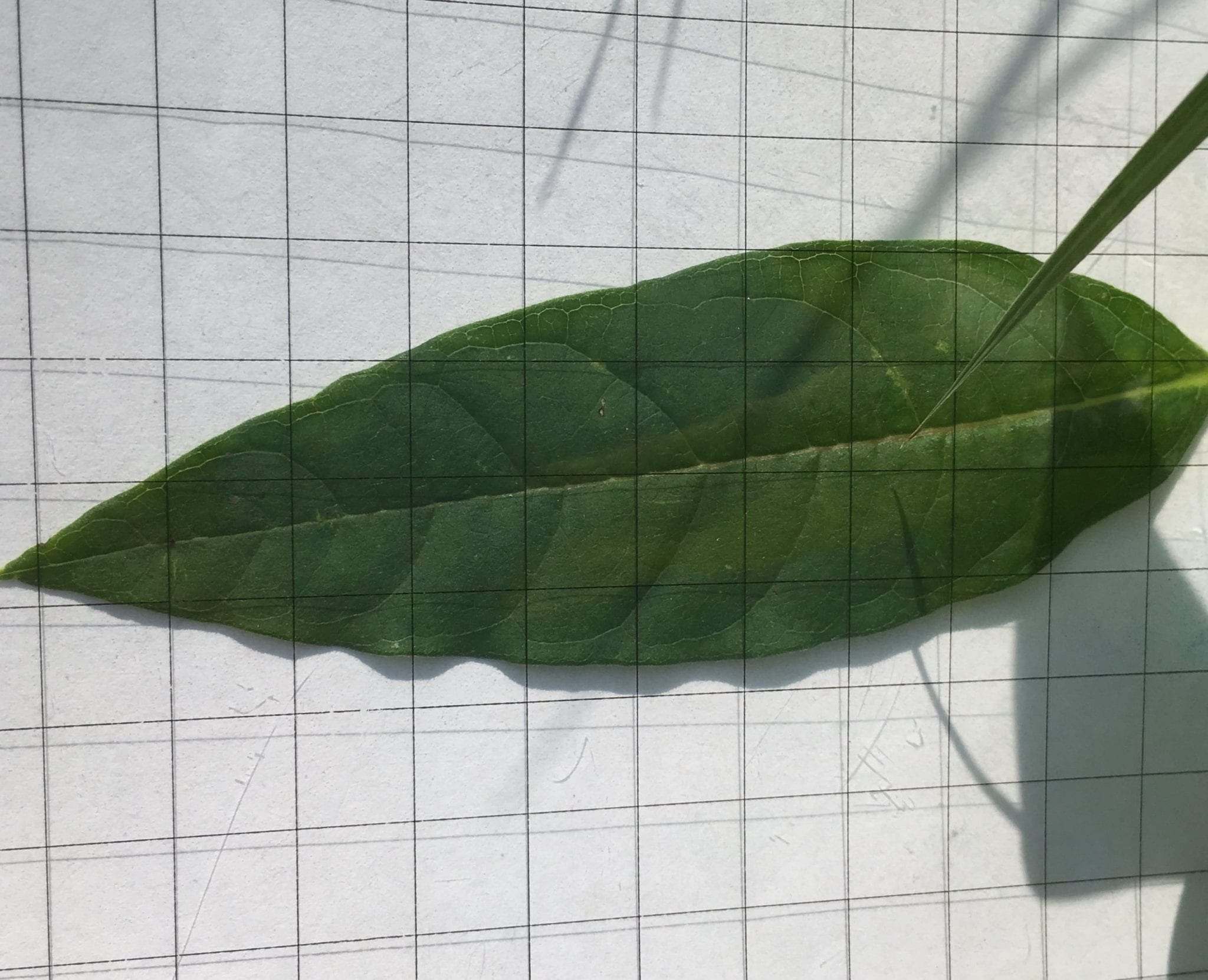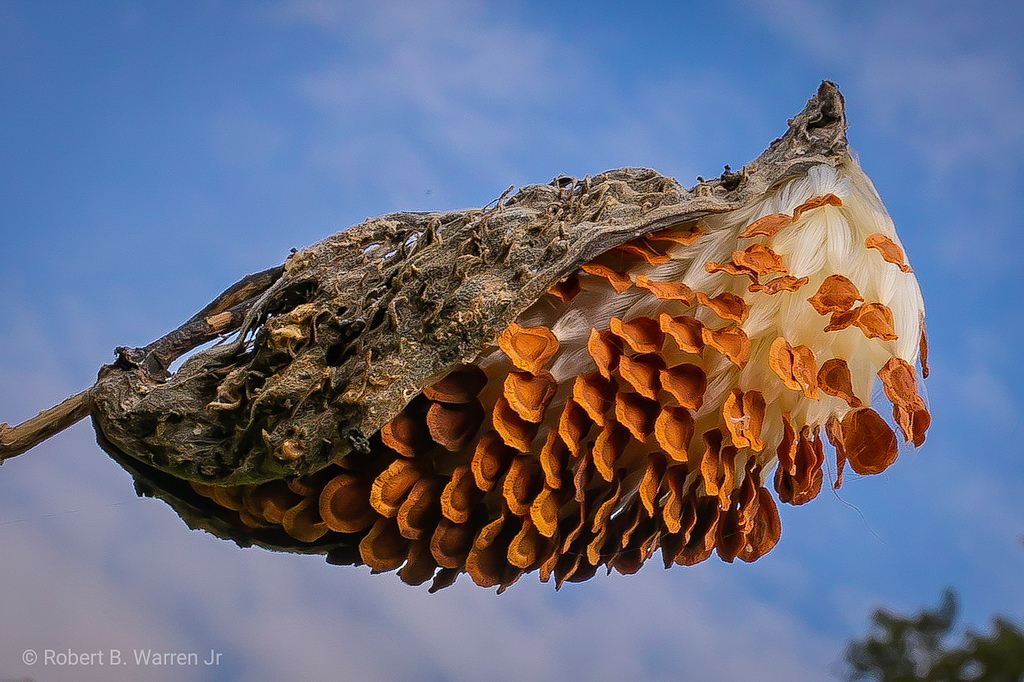About Phenology
The Phenology Project is an ongoing citizen science experiment. Citizen science experiments invite individuals and students to help researchers answer big questions about the world. In our Phenology Investigations, we are working together to understand how the timing of milkweed development and interactions with insects vary across time and space. What we learn should help people make decisions about how to restore milkweed populations specifically, and it should contribute to our learning about how to restore degraded communities more generally. In an era of widespread loss of biodiversity and ecosystem services, these are important lessons.
Phenology is the timing of life events, like the time at which a plant sprouts, flowers, or dies. Phenology can be a fixed genetic trait that contributes to local adaptation; for example, plants from colder areas may tend to germinate at colder temperatures than those from warmer regions. Phenology is also a trait that can change depending on cues in the environment; for example, germination may happen early or late depending on moisture and temperature in any given year. Early evidence from our studies suggests that plants from different regions show different phenologies, but we don’t yet know if that means they experience different interactions with invertebrates. If they do, then it could be important to plant locally adapted seed varieties.
Phenology is also important to study and document due to climate change. Climate change will continue to cause changes in long-term average temperature, growing season length, precipitation patterns, and the frequency of natural disasters. These changes can influence the survival, distribution, phenology, and ecology of many species. For example, evidence suggests common milkweed has shifted its flowering phenology: blooms are starting earlier and ending earlier as global temperatures increase (Howard, 2018). If species that interact, such as plants and their pollinators, respond differently to climate change, a “phenological mismatch” may occur in which the normally interacting life stages no longer align. The fitness consequences of such mismatches can be severe (Yang and Rudolph, 2010). Mismatched phenology can impact a plant’s risk of herbivory, or getting eaten by herbivores depending on the emergence of both species in the season. A change in flowering time could also impact which species are available for pollination, the process that moves pollen between plants allowing sexual reproduction.
We want to understand how variation in phenology and development of a plant affect the probability of herbivory and pollination in order to predict the impacts of moving plants to new locations and climate-change induced shifts on plant phenology. We hypothesize that early emerging plants might escape herbivory. This could be problematic if they are less palatable for the migrating monarch butterfly population that depends on milkweed plants. We also wonder if early and late flowering plants experience less pollinator visitation. Additionally, we hope to develop a more complete understanding of the regional and temporal differences in the nature, timing, and intensity of interactions between milkweed and invertebrates.
Specifically, we ask 1) Are there geographic patterns in milkweed herbivory and pollination? Which types of insects are most common on plants at each developmental stage in different regions? 2) Do shifts in plant phenology alter species interactions? That is, do insects prefer particular plant stages, and do plants that reach a developmental stage relatively early experience different interactions from those that reach the same developmental stage late?, and 3) Is there a relationship between species interactions and approximations of plant fitness?”
Consult the project breakdowns below to see which investigations best match your resources and interests. Check out related curriculum at the Teaching Materials dropdown.
Join Us!
You can join this experiment at any time. Use the table below to identify a project that meets your goals and for which you have access to the necessary resources. The protocols give detailed step by step procedures. Following these protocols helps maintain the reliability of your measurements and hence the quality of the data and the research. You can find the specific project protocols and an instructor manual here. We also have training videos for each protocol, so you can learn and practice important skills before going out into the field!
All your data can be entered, analyzed, and submitted here.
SAFETY: Please be sure to only collect data where you feel safe and have permission to work. Individuals for whom outdoor work is risky or problematic, such as those with severe allergies, might productively contribute through managing photos/videos and contributing to data entry and analysis.



Project Breakdown
| Project | Project Goals | Site and Materials | Time Commitment |
|---|---|---|---|
| 1. Phenology and Herbivory (pairs well with #3) | • Investigate the relationship between phenology of milkweed and the risk of herbivory by insects that eat them. • Understand how the abundance and composition of the herbivore community on milkweed changes across space and time. | • One or more milkweed populations, ideally with 30-45 milkweed stems • Phenology and Herbivory Guide, meter stick, (if observing 3 times: flags or other way to mark plants) • Data sheet(s) | •About 5-10 minutes per plant. Suggest 30-45 plants per plot. • Observe 3 times during one season (spring, summer, or fall). Or observe 3 plots in space at a single time. |
| 2. Herbivory Bioassay (Protocol in development) | • Track the risk of herbivory, or how much of the plants insects eat, across space. • Know what kinds of creatures are eating milkweed plants in different regions. | • Ruler or meter stick • Milkweed seeds, sand, pots, potting soil, and a place to grow plants indoors • An outdoor location exposed to insects to position potted milkweed for ~2 weeks. Ideal conditions: within view of wild milkweed; will not be disturbed by people. • Data sheet(s) | • Preparation: Seed cold stratification and germination can take 2-3 months of minimal care and attention. • Experiment: up to 14 days in the spring as plants start to emerge in your area. 30-45 Plants should be observed for 5-10 minutes every 2-3 days |
| 3. Pollinators (pairs well with #1) | • Determine how the developmental state of the milkweed and its phenology affect its probability of pollination. • Understand how the abundance and composition of the pollinator community on milkweed changes across space and time. | • A population of flowering milkweed, ideally with 30-45 stems. • A camera that can record video (recommended) • Data sheet(s) | • Protocol 1: ~5 minutes per plant. Suggest 30-45 plants. • Protocol 2: Up to 10 minutes per plot. • Suggested frequency of observations: weekly during flowering (summer). |
| 4. Seed Collection | • Understand how the phenology of populations differ from each other genetically by growing plants from different places in a common garden. | Any naturally existing population (remnant prairie or naturally colonized sites like old fields or roadsides) of common milkweed where you have permission to collect seed pods. | • Completing Phenology and Herbivory protocol: about 10 minutes per plant for 5 plants total. • Seed processing: 30-45 minutes for 5 plants total. • Suggested frequency: once during Fall. |
Consider Sharing Pictures and Videos From the Field!
Please visit the ‘Field Media‘ page in the Library to learn how to share videos and photos from your observations.
Contribute Seeds to Our Network

